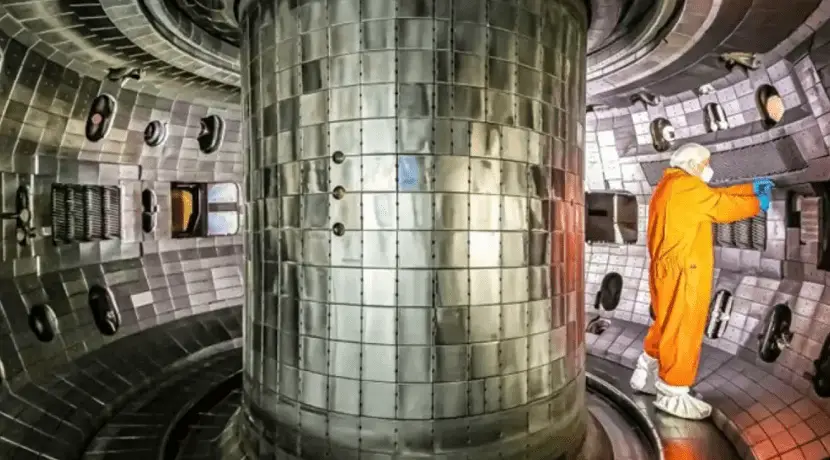Record plasma density – breakthrough in nuclear fusion
Greenwald density 01. May 2024 9:39 p.m. Robert Klatt In experiments with the tokamak DIII-D fusion reactor, the plasma density limit previously thought possible was significantly exceeded. Alpha stabilization played a crucial role here. San Diego (United States). Nuclear fusion research has made significant progress in recent years. Scientists at the Korea Institute of Fusion […]

Greenwald density
Robert Klatt
In experiments with the tokamak DIII-D fusion reactor, the plasma density limit previously thought possible was significantly exceeded. Alpha stabilization played a crucial role here.
San Diego (United States). Nuclear fusion research has made significant progress in recent years. Scientists at the Korea Institute of Fusion Energy (KFE) recently kept hot plasma at 100 million degrees Celsius stable for more than 100 seconds in what is known as high confinement mode (H-mode) . Today, General Atomics (GA) researchers achieved a plasma density that exceeds the Greenwald density for a period of 2.2 seconds in experiments with the DIII-D Tokamak Fusion Reactor, an experimental facility at the U.S. Department of Energy (DOE). The limit that we thought possible was largely exceeded (+20%).
According to the publication in the specialist magazine Nature The researchers also significantly increased the inclusion of energy in the plasma compared to standard methods (+ 50%) and significantly reduced edge localized modes (ELM), i.e. instabilities at the edge of the plasma. which can damage the walls of the reactor. Additionally, instabilities at the edge of the plasma divertor, which removes impurities from the plasma, have been significantly reduced, reducing erosion of the reactor wall.
High plasma density creates benefits
The scientists explain that the enormous progress was made possible by a high pressure difference in the plasma with a strong plasma flow. This created a “barrier” that enhanced the influence of the plasma in the magnetic field and reduced mixing. The fusion experiment therefore proves that only small ELMs appear in high plasma density and that the energy confinement is better than with low plasma density. According to the researchers, these discoveries are crucial for the development of efficient and economical energy production through nuclear fusion.
Alpha stabilization plays a key role
The data collected also shows that alpha stabilization is crucial. This is an effect that occurs when plasma pressure is high and plasma current is optimally distributed. In the fusion experiment, the researchers used the high poloidal beta operating mode to ensure the best possible conditions. According to them, it therefore makes sense to further optimize this mode of operation so that it can be used in future fusion power plants.
Nature, do I: 10.1038/s41586-024-07313-3














